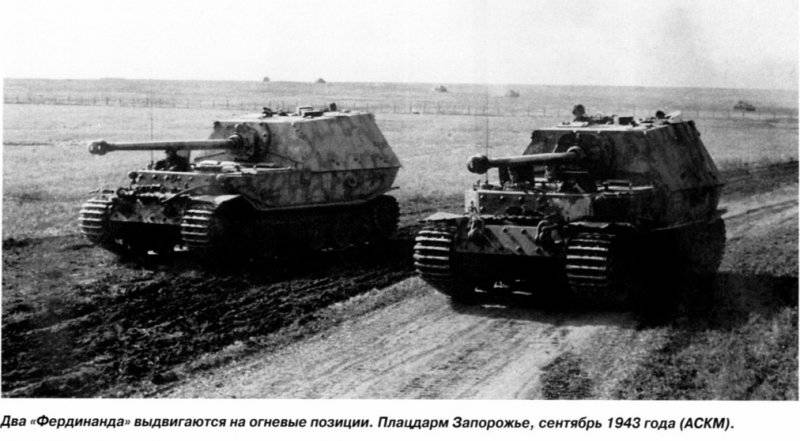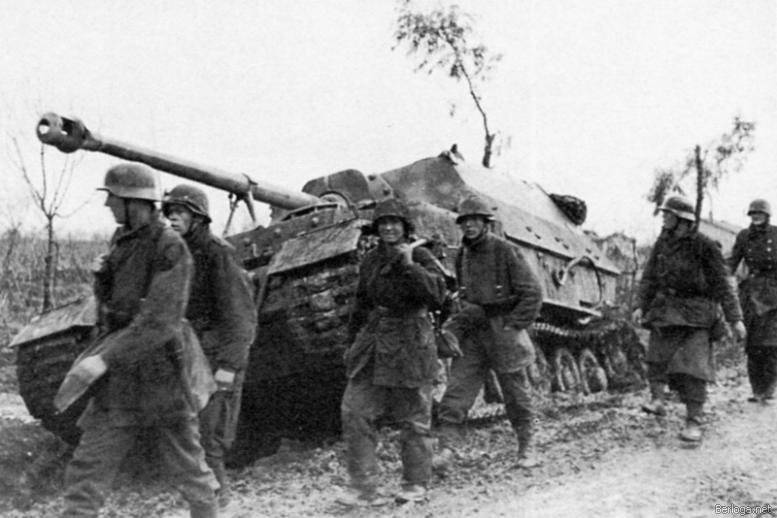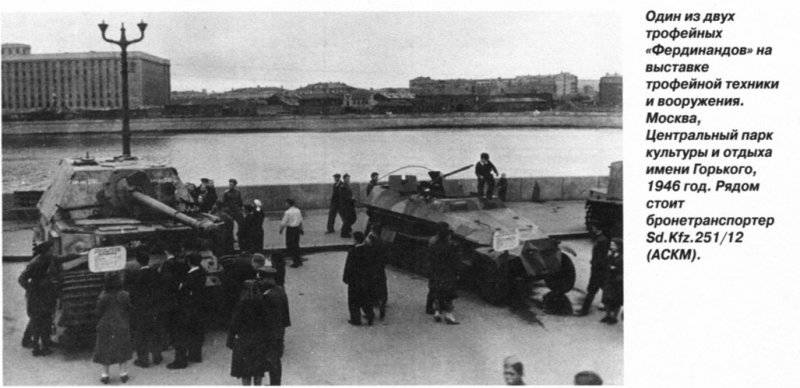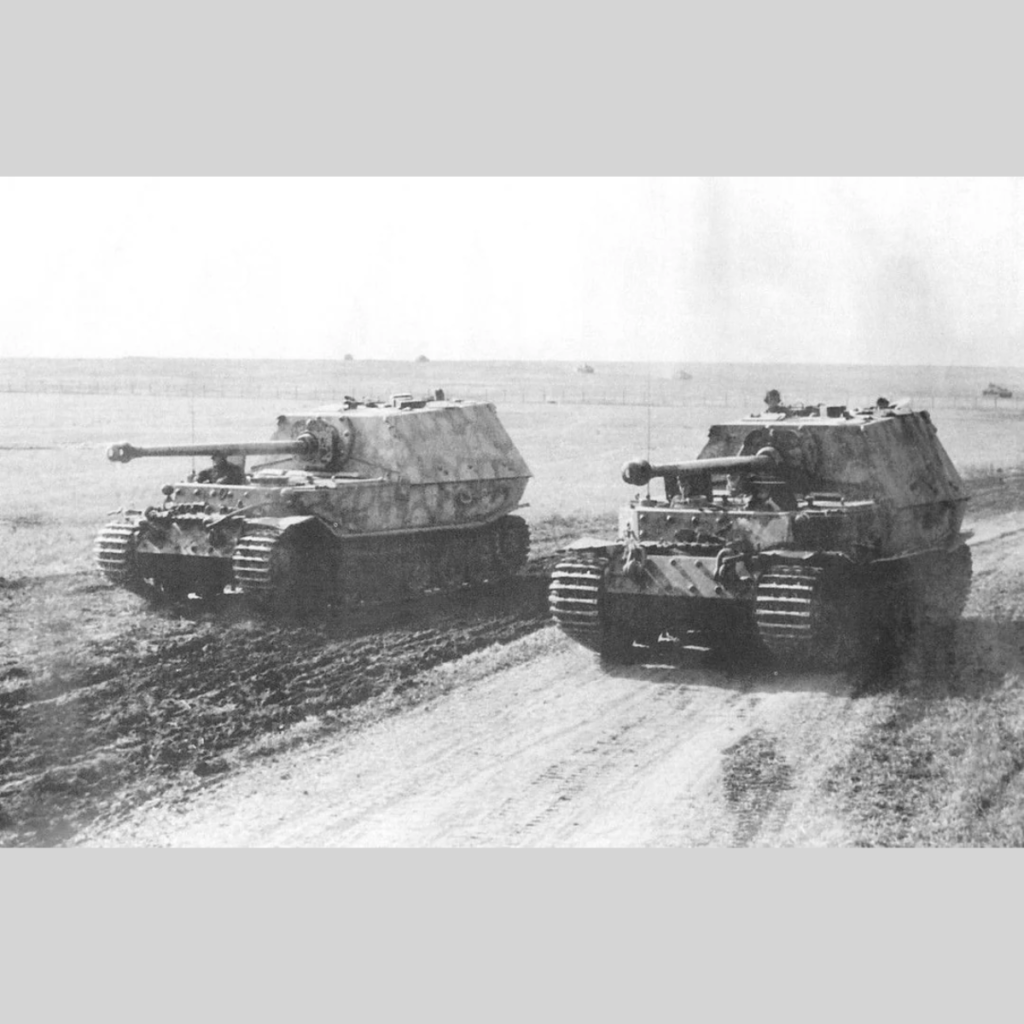
Whether the Germans had the best self-propelled guns in the world is still a matter of debate, but the fact that they created an artillery piece left an indelible memory in the hearts of all Soviet soldiers. Bucket is a certainty. We are talking about the heavy self-propelled gun Ferdinand. To the point that, starting from the second half of 1943, in almost every combat report, the Soviet army destroyed at least one such self-propelled gun. If we add up the losses of the Ferdinands as reported by the Soviet Union, thousands of them were destroyed during the war. The interesting thing about the situation is that the Germans produced only 90 during the war and another 4 ARVs based on them. It is difficult to find an example of an armored vehicle from World War II, produced in such small numbers but at the same time so famous. All German self-propelled guns are inscribed as “Ferdinands”, but most often – “Marders” and “Stugas”. The situation was similar with the German Tiger: the Pz-IV medium tank with a long gun was often confused with it. But here at least there is a similarity in appearance, but the similarity between “Ferdinand” and StuG 40, for example, is a big question.
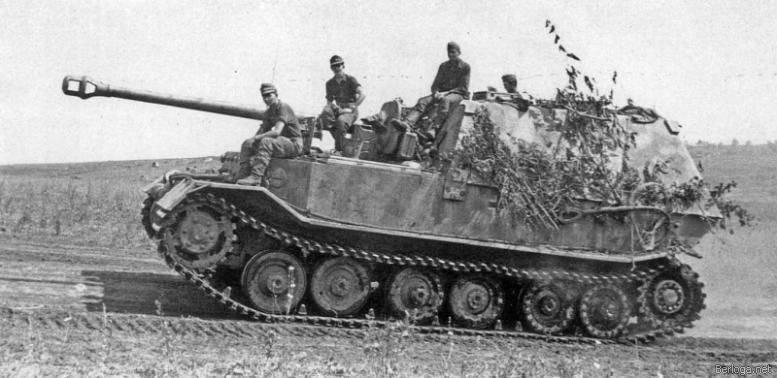
So what kind of person is “Ferdinand” and why has he become so widely known since the Battle of Kursk? We will not go into technical details and design development issues, because this has already been written in dozens of other publications, but will pay attention to the battles on the northern front of the Kursk Bulge , where these extremely powerful machines are used massively.
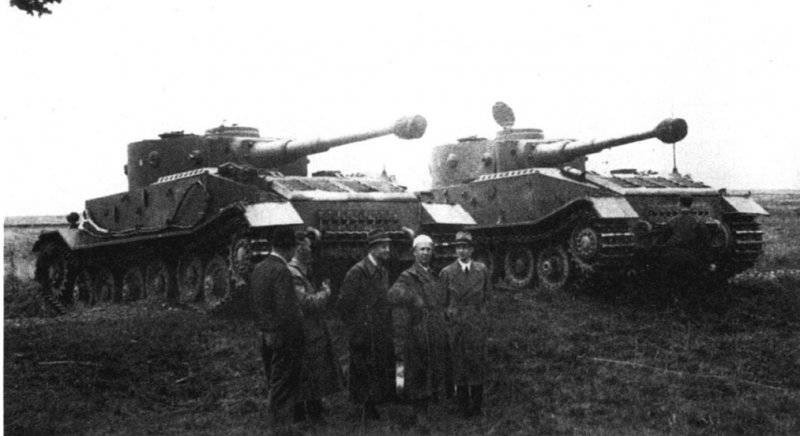
The command tower of the self-propelled gun was assembled from forged cement armor plates transferred from the warehouses of the German Navy. The frontal armor of the cabin is 200 mm thick, the side and rear armor is 85 mm thick. The thickness of the entire side armor makes the self-propelled gun virtually invulnerable to most 1943-style Soviet artillery at distances of more than 400 m. The armament of the self-propelled artillery consisted of a 43 cm StuK 8.8 gun (some sources mistakenly cite the PaK 43/2 field version) with a barrel length of 71 caliber, its muzzle energy was one and a half times higher. compared to heavy gunstank”Tiger”. The Ferdinand cannon penetrated all Soviet tanks from all angles of attack at all practical firing ranges. The only reason why armor doesn’t penetrate when hit is because it bounces back. Any other hit caused armor penetration, which in most cases meant the Soviet tank was disabled and its crew partially or completely killed. This serious weapon appeared among the Germans shortly before the start of Operation Citadel.
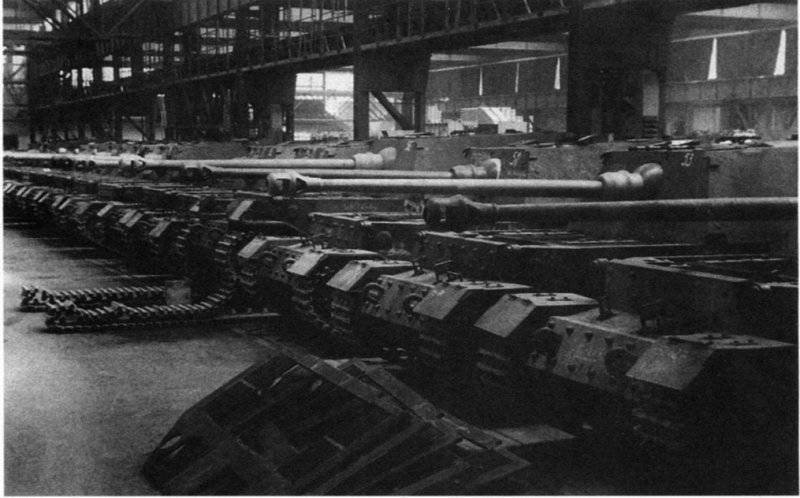
The formation of “Ferdinand” self-propelled artillery units began on September 1, 1943. In total, it was decided to create two heavy battalions (divisions).
The first of them, numbered 653 (Schwere PanzerJager Abteilung 653), was formed on the basis of the 197th StuG III assault gun division. According to the new staff, the division was supposed to have 45 self-propelled guns Ferdinand. This unit was not chosen by chance: the division’s officers had a lot of combat experience and participated in battles in the East from the summer of 1941 to January 1943. By January 1943, the 654th battalion was assigned fully staffed according to payroll. However, at the beginning of May 653, all equipment was transferred to the staff of the 9th Battalion, formed in France in the city of Rouen. By mid-May, the 1943 battalion was again almost fully staffed and had 12 self-propelled guns. After completing training at the Neuseidel training ground, from November 1 to 1, 2019, the battalion left for the Eastern Front at 10 o’clock. rank.
The 654th Heavy Tank Destroyer Battalion was formed on the basis of the 654th Tank Destroyer Division at the end of January 1943/35. Its personnel, who had previously fought with PaK 36/653 anti-tank guns and later with Marder II self-propelled guns, had much less combat experience than their colleagues in the 28th battalion. Until September 30, the battalion was in Austria, from September 13 in Rouen. After the final exercises, from September 1 to 1, the battalion departed for the Eastern Front with fourteen echelons.
According to the Wartime Staff (K. St.N. No. 1148c dated March 31, 2043), the heavy tank destroyer battalion includes: command battalion, one headquarters company (platoon: control , engineering, ambulance, air defense). ), three companies of “Ferdinands” (in each company there are 14 company headquarters vehicles and three platoons, each platoon has 45 vehicles; that is, 1 vehicle per company), a repair and restoration company , a motor transport company. Total: 251 Ferdinand self-propelled guns, 8 armored ambulances Sd.Kfz.6/7, 1 anti-aircraft vehicle Sd.Kfz 9/15, 9 half-wheeled tractors Sd.Kfz (18 tons), trucks and car .
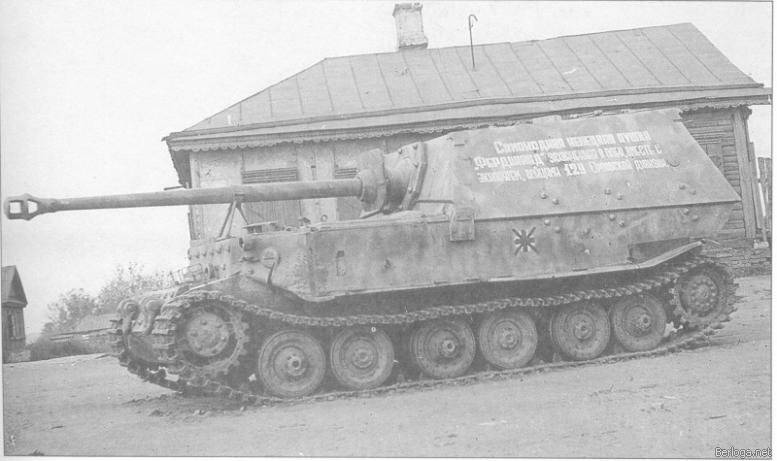
The staffing structure of the battalions has changed slightly. We must start from the fact that the 653rd battalion includes companies 1,2, 3 and 654, and the 5th and 6th battalions include companies 7, 4 and 5. Company 501 “falls” somewhere. The numbering of vehicles in the battalions corresponds to German standards: for example, both vehicles of the 502nd company headquarters have the numbers 1 and 511, the vehicle numbers of the 514th platoon range from 2 to 521; platoon 524 3 – 531; The 534th is 42 – 45 respectively. But if we look closely at the combat strength of each battalion (division), we will see that among the “combat” units there are only 653 self-propelled guns. And there are 3 in the state. Where did the remaining three self-propelled guns of each battalion go? This is where there is a difference in the way the improvised tank destroyer divisions are organized: if in battalion 654 3 vehicles were placed in reserve groups, then in battalion 01, 02 “auxiliary” vehicles were organized into a headquarters group without tanks. – Standard tactical codes: II-03, II-XNUMX, II-XNUMX.
Both battalions (divisions) became part of the 656th Tank Regiment, the headquarters of which was established by the Germans on September 8, 1943. The formation proved to be very powerful: in addition to 90 Ferdinand self-propelled guns , there was also the 216th assault tank battalion (Sturmpanzer Abteilung 313), and two companies of radio-controlled BIV Bogvard tanks (314th and 314th). The regiment was supposed to serve as the spearhead of the German offensive in the direction of Art. Ponyri – Maloarkhangelsk.
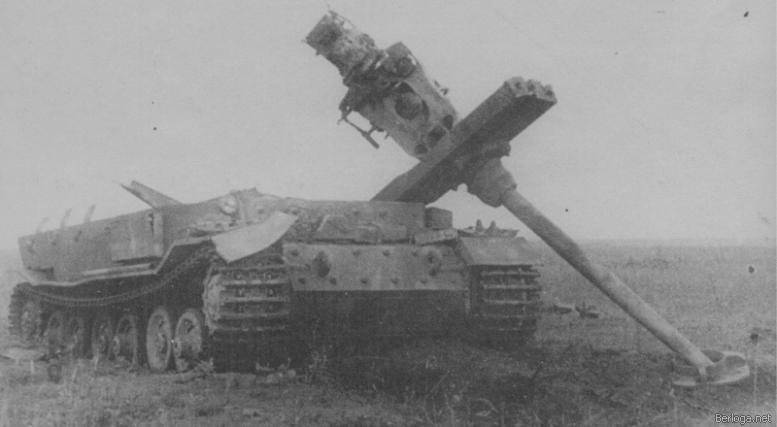
On April 25, the Ferdinands began moving to the front lines. By September 1943, 654, the 653rd regiment was deployed as follows: to the west of the Orel-Kursk railway line, the 216th battalion (Arkhangelskoe district), to the east the 45th battalion (Glazunov district), followed by three companies, XNUMX battalion (A total of XNUMX Brummbars). Each Ferdinand battalion was assigned a company of radio-controlled B IV tanks.
On May 5, the 86th Tank Regiment launched an attack, supporting units of the German 292nd and 653rd Infantry Divisions. However, the intensive attack was not successful: on the first day, the 257.7th battalion was trapped in fierce fighting at height 10, which the Germans nicknamed “Tank”. Not only were thirty-four buried up to the tower at altitude, but the altitude was also covered with powerful minefields. On the first day, a self-propelled gun of the battalion was blown up by a mine. There were also heavy losses in personnel. The 17th company commander, Hauptmann Spielmann, was seriously injured when he was blown up by an anti-personnel mine. Determining the direction of attack, the Soviet artillery also opened fire. As a result, by 00:00 on September 5, only 12 Ferdinands were still moving! The remaining people suffered injuries of varying severity. The next two days, the battalion’s remnants continued to fight to capture the station. Ponyri.
Battalion 654’s attack was even more disastrous. The battalion’s 6th Company mistakenly rushed into its own minefield. Within minutes, most of the Ferdinands were blown up by their own mines. Discovering that the giant German vehicles had not yet crawled towards our position, the Soviet artillery opened concentrated fire on them. As a result, the German infantry supporting the attack of the 6th company suffered heavy losses and had to lie down, leaving the self-propelled guns without cover. Four “Ferdinands” from the 6th company still managed to reach the Soviet positions, and there, according to the recollections of German self-propelled gunners, they were “attacked by several brave Russian soldiers who remained were in the trenches and were armed with flamethrowers, and from the right wing, from the railway line, artillery fired but found it ineffective so the Russian soldiers withdrew in an orderly manner.
Companies 5 and 7 also reached the first line of trenches, losing about 30% of their vehicles to mines and heavy artillery. At the same time, the commander of the 654th battalion, Major Noack, was seriously injured by artillery fragments.
After capturing the first line of trenches, the remnants of the 654th battalion advanced towards Ponyri. At the same time, several vehicles were blown up again by mines, and “Ferdinand” No. 531 of the 5th company, immobilized by fire from Soviet artillery, was finished off and burned. At dusk the battalion reached the hills north of Ponyri, where they stopped for the night and regrouped. The remaining battalion has 20 vehicles on the move.
On 6 May 654, due to fuel problems, the 14th battalion only attacked at 00:00. However, under heavy fire from Soviet artillery, the German infantry suffered heavy losses, had to retreat and the attack failed. On this day, the 654th battalion reported “a large number of Russian tanks arriving to strengthen the defense.” According to evening reports, self-propelled artillery batteries destroyed 15 Soviet T-34 tanks, of which 8 were crewed by Hauptmann Lüders, and 5 by Lieutenant Peters. There are 17 cars running.
The next day, the remnants of the 653rd and 654th battalions were drawn to Buzuluk, where they formed the corps reserve. Two days were spent repairing the car. On September 8, several “Ferdinands” and “Brumbars” participated in an unsuccessful attack on the station. Ponyri.
At the same time (August 13), the headquarters of the Soviet Central Front received the first report from the artillery commander of the XNUMXth Army about the ship Ferdinand being blown up by a mine. Just two days later, a group of five GAU KA officers from Moscow arrived at the front headquarters to study this sample. However, they were unlucky, at this time the area where the damaged self-propelled guns were located was occupied by German troops.
The main events took place from September 9 to 10, 1943. After several unsuccessful attacks on the post. The Pony German army changed its direction of attack. From the northeast, through the 505/40 national farm, an improvised combat group under the command of Major Kall attacked. The composition of this group was impressive: the 654th heavy tank battalion (about 653 Tiger tanks), the 44th battalion and part of the vehicles of the 216th battalion (a total of 38 Ferdinands), the 20th assault tank battalion (40 homemade Brummbars). push guns”), an assault artillery division (42 StuG 17 and StuH 2), 17 Pz.Kpfw III and Pz.Kpfw IV tanks. Immediately behind this army, the tanks of the 17th TD Division and Mechanized infantry in armored vehicles are expected to move.
Thus, on a 3 km long front, the German army concentrated about 150 combat vehicles, not including the secondary level. Among first-class vehicles, more than half are heavy vehicles. According to reports from our artillerymen, the Germans here for the first time used the new attack formation “in line” – with Ferdinand in the lead. The vehicles of battalions 654 and 653 operate in two levels. 30 vehicles headed to route 14, a company (120 vehicles) moved on route 150–150 meters, company commanders stood in a row on staff vehicles carrying flags on antennas.
On the first day, this group easily passed the 1st of November national farm to reach the village of Goreloye. Here our artillerymen made a truly brilliant move: seeing the invulnerability of the latest German armored monsters to artillery, they were allowed to enter a huge minefield mixed with anti-tank mines and land mines from captured bullets, then opened fire like a storm on the “entourage”. ” of medium-sized ones following the tanks and assault guns of the Ferdinands. As a result, the entire attack group suffered significant losses and was forced to retreat.
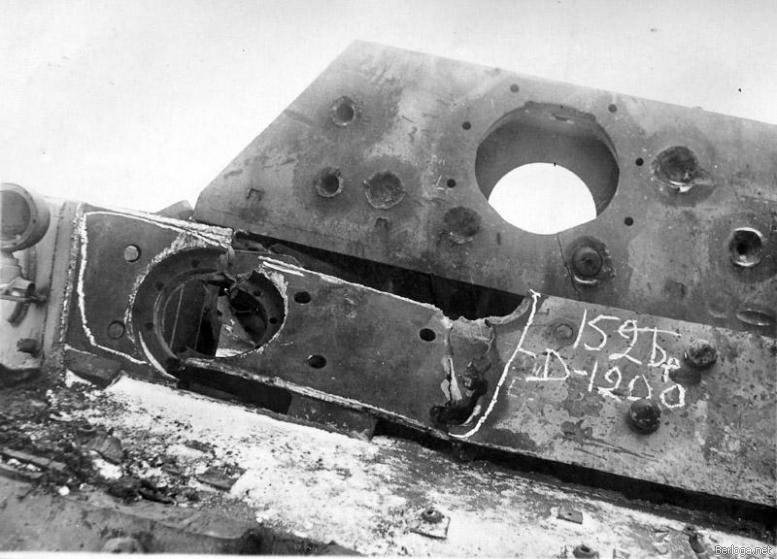
The next day, September 10, Major Kall’s group launched a powerful new attack and personal vehicles broke through to the outskirts of the station. Ponyri. The breakthrough vehicle is the Ferdinand heavy self-propelled gun.
According to the description of our soldiers, Ferdinand’s troops advanced, firing from a gun from short stops from a distance of one to two and a half kilometers: a very long distance for armored vehicles of that time. Subjected to concentrated fire or discovering mined areas on the terrain, they retreated to some shelter, trying to always face Soviet positions with thick armor in front, absolutely defenseless. invulnerable to our artillery.
On May 11, Major Kall’s attack group was disbanded, and the 2nd heavy tank battalion and tanks of the 70th TD Division were dispatched against our 654th Army to the Kutyrka-Teploye area. In the station area. Only units of the 216th battalion and the 65th tank assault division remained in Ponyri, trying to evacuate damaged equipment to the rear. But it was not possible to evacuate the 12-ton Ferdinands between January 13 and 14, and on January 34, Soviet troops launched a massive counterattack from the Ponyri station in the direction of the national farm. joined on September 654. By mid-afternoon, the Germans were forced to retreat. The tanks supporting our infantry attack suffered heavy losses, not mainly due to German fire, but because a company of T-XNUMX and T-XNUMX tanks jumped into a powerful minefield. strong where the Ferdinands were blown up four days earlier by the 1st battalion.
On September 15 (that is, the very next day), the German equipment shot down and destroyed at the Ponyri station was examined and studied by representatives of the GAU KA and NIBT of the test site. In total, on the battlefield northeast of the station. Ponyri (2 km2) still has 21 self-propelled guns “Ferdinand”, three “Brummbar” assault tanks (in Soviet documents – “Bear”), 10 Pz-III and Pz tanks -IV, two command tanks and several radio-controlled tanks tank B IV “Bogvard” ”
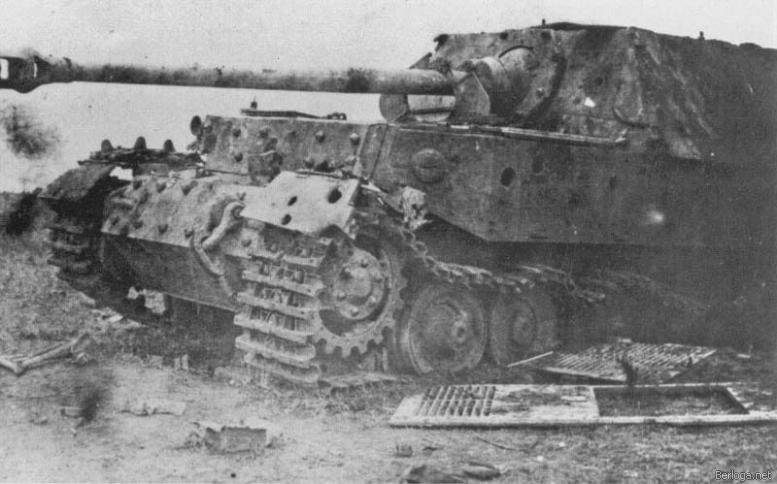
Most of the Ferdinands were discovered in a minefield near the village of Goreloye. More than half of the vehicles inspected had chassis damage due to the effects of anti-tank mines and anti-personnel mines. 5 vehicles had frame damage due to being hit by artillery shells of 76 mm caliber or higher. Two Ferdinands were pierced by guns, one of them receiving up to eight shots in the barrel. One vehicle was completely destroyed by a bomb from a Soviet Pe-2 bomber, and one vehicle was completely destroyed by a 203 mm artillery shell hitting the cabin roof. And only one “Ferdinand” has a bullet hole on the left side, created by 76 mm armor-piercing shells, 7 T-34 tanks and a ZIS-3 battery firing at it from all sides, from a distance 200– 400 m And another “Ferdinand”, undamaged outside the hull, was burned by our infantry with COP bottles. Several Ferdinands, deprived of the ability to move under their own power, were destroyed by their crews.
The main part of Battalion 653 operates in the defense area of our 70th Army Group. Irreparable losses in the battles from November 5 to November 8 amounted to 12 vehicles. Moreover, our troops captured one in perfect working condition and even its crew. It happened as follows: while repelling one of the German attacks in the area of the village of Teploye on September 152–4, the advancing German troops were exposed to heavy artillery fire from a division corps artillery, a corps artillery battery. The Soviet Union’s newest SU-333 self-propelled gun and two IPTAPs, after which the enemy left 129 “Ferdinand” on the battlefield. Despite such a massive bombardment, not a single German self-propelled gun was able to penetrate the armor: two vehicles had their chassis damaged by artillery shells, one was heavily destroyed by large-caliber artillery fire (possibly is SU-654) – its front plate is destroyed. move out of place. And the fourth (number 653), trying to escape the shelling, moved in reverse and, having reached the sandy area, simply “sat down” on its belly. The crew tried to destroy the vehicle, but they then faced an attack by Soviet infantrymen of the 2nd Infantry Division and the Germans chose to surrender. Here, our people are faced with the same problem that has long weighed on the minds of the commanders of the 60th and 65th German battalions: how to pull this giant out of the battlefield? Pulling the “hippopotamus out of the swamp” lasted until November 11, when with the efforts of 10 S-XNUMX and S-XNUMX tractors, “Ferdinand” was finally pulled to solid ground. But during further transportation to the station, one of the gasoline engines of the self-propelled gun broke down. The car’s further fate is still unknown.
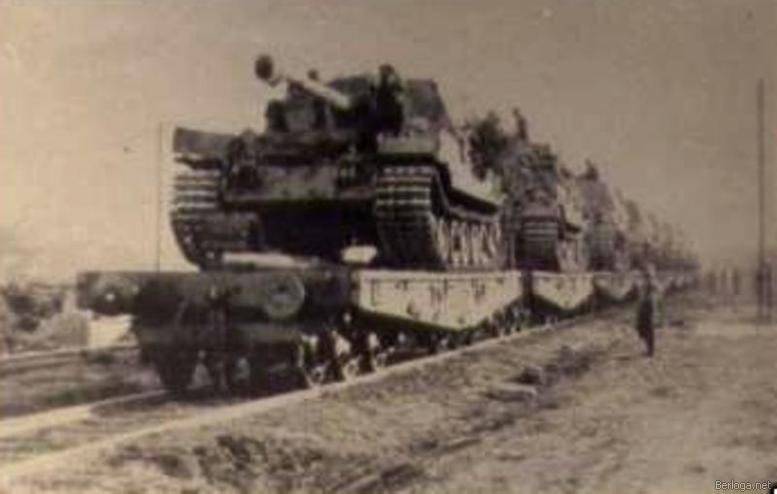
With the beginning of the Soviet counteroffensive, the Ferdinands found themselves among their own. Thus, from September 12 to 14, 653 self-propelled guns of the 53rd battalion supported units of the 22nd Infantry Division in the Berezovets area. At the same time, while repelling the attack of Soviet tanks near the village of Krasnaya Niva, the crew of only one “Ferdinand”, Lieutenant Tiret, reported the destruction of 34 T-34 tanks.
On June 15, 654, the 6th battalion repelled the attack of our tanks from Maloarkhangelsk – Buzuluk, while the 13th company reported the destruction of 30 Soviet combat vehicles. After that, the remnants of the battalions were pulled back to Oryol. By September 9, all “Ferdinand” troops were withdrawn from the front and, by order of the headquarters of the XNUMXth Army, they were sent to Karachev.
During Operation Citadel, the 656th Tank Regiment reported daily by radio the presence of battle-ready Ferdinands. According to these reports, on 7/37 there were 8 Ferdinands in service, on 26 – 9/13, 10 – 24 November, 12 – 12/24, 13 – 24/14, 13 – 653 May, 19 – 4 May 656. , on 656 May 23 – 21. These data do not correlate well with German data on the combat composition of the attack groups, which included the XNUMXth and XNUMXth battalions. The Germans recognized that 10 Ferdinands were irretrievably lost, in addition, 10 more were lost “due to an electrical short circuit and subsequent fire”. As a result, the XNUMXth Regiment lost 10 vehicles. In addition, there are contradictions with Soviet data that graphically recorded the destruction of 10 Ferdinand self-propelled guns.
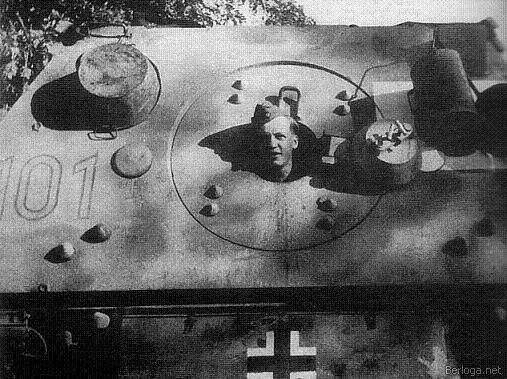
Perhaps the Germans tried, as usual, to consider some vehicles as irreparable losses, because, according to them, from the moment the Soviet troops began to attack, losses were irreparable. serviced up to 20 Ferdinands (this number apparently included a portion of the four). the car caught fire due to technical reasons). Thus, according to German data, the total irreparable losses of the 656th regiment from September 5 to September 1, 1943, 1943 amounted to 39 Ferdinands. Nevertheless, this is often confirmed by documents and, in general, corresponds to Soviet data.
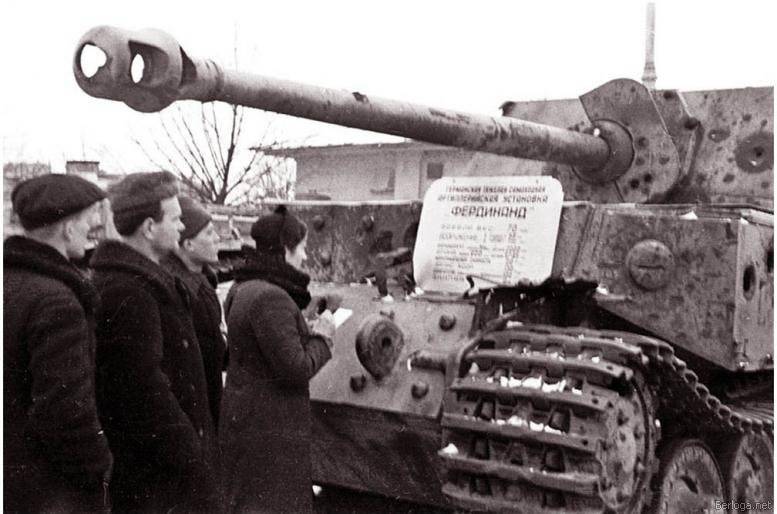
If Ferdinand’s losses to both Germany and the Soviet Union coincide (the only difference is in dates), then “unscientific fiction” will begin. The commander of the 656th Regiment said that during the period from 5/15 to 1943/502/20, the regiment disabled 100 enemy tanks and self-propelled guns, 653 anti-tank guns and about 320 other artillery pieces. . The 1st Battalion particularly distinguished itself in the field of destruction of Soviet armored vehicles, recording the destruction of 10 Soviet tanks and a large number of guns and vehicles.
Let’s try to calculate the losses of Soviet artillery. During the period from September 5 to September 1943, 1943, the Central Front under the command of K. Rokossovsky lost 5 artillery pieces of various types. This is data for the entire front, occupying a very long line of defense, so the data about 13 guns destroyed in a small “patch” seems to be overestimated. In addition, it would be interesting to compare the declared number of destroyed Soviet armored vehicles with real losses. So: by March 215, tank units of the 827th Army consisted of 2 tanks and 19 self-propelled guns, another 13 armored units were included in the 2nd and 5th TA Tank Corps, is in the forward reserve force. Most of them were sent into precise combat in the defense sector of the 15th Army, where the Germans delivered the main blow. The losses of the 270th TA between the 34th and the 70th of September amounted to 115 burned and damaged T-13 and T-132 tanks, the losses of the 13th Tank – 1129 vehicles, 517th Army (taking into account all replenishments) – 219 vehicles. As a result, out of 13 tanks and self-propelled guns deployed in Military Region 80, the total damage amounted to 160 vehicles, of which more than half were recovered in battles (irreparable losses amounted to 4 vehicles). ). If we take into account that the defense line of the 8th Army in different days of operations ranged from 505 to 656 km, and the Ferdinands operated on the front from 505 to 656 km, it becomes clear that it is impossible to “click” Okay. ” So many Soviet armored vehicles in such a narrow area are simply unreal. And if we also take into account the fact that several tank divisions, as well as the XNUMX heavy tank battalion “Tigers”, assault gun divisions, self-propelled guns “Marder” and ” Hornisse”, as well as artillery, acted against the Central Front then it was clear that the 1st Regiment brazenly heaved. However, a similar picture emerges when examining the activities of the heavy tank battalions “Tigers” and “Imperial Tigers”, and indeed all German tank units . To be fair, it must be said that the combat reports of the Soviet, American, and British armies all had such “honest” errors.
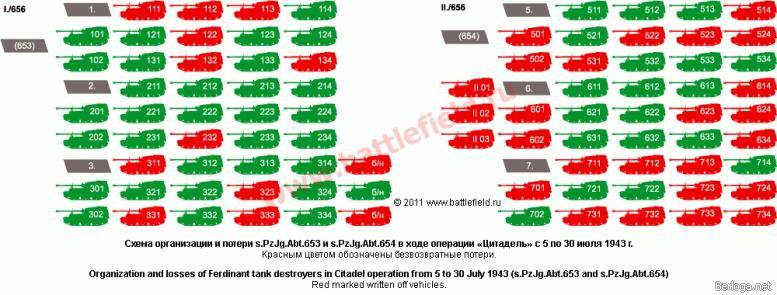
So what is the reason for “heavy assault gun” or “Ferdinand heavy tank destroyer” if you prefer?
There is no doubt that the creation of Ferdinand Porsche is a unique masterpiece of technical thinking. Huge self-propelled guns use many technical solutions (unique chassis, combined power plant, weapon placement, etc.) that have no analogues in tank construction. At the same time, many technical “highlights” of the project were not suitable for military purposes, and extraordinary armor protection and powerful weapons were acquired at the cost of incredible mobility. , small energy reserves, complexity of the vehicle in operation and lack of concept of use of such equipment. This is absolutely true, but this is not the reason for such “fear” of Porsche’s creation that Soviet artillerymen and tankers saw crowds of “Ferdinands” in almost all war reports. fighting, even after the Germans took all remaining self-propelled guns from the eastern front to Italy and they did not join the Eastern Front until the battles in Poland.
Despite all the imperfections and “childhood diseases”, the self-propelled gun “Ferdinand” turned out to be a terrible enemy. Her armor cannot be penetrated. I just couldn’t get over it. At all. Nothing. You can imagine what the Soviet tank and artillery crews felt and thought: you hit it, firing shell after shell, and it, as if under a spell, rushes forward and straight. on you.
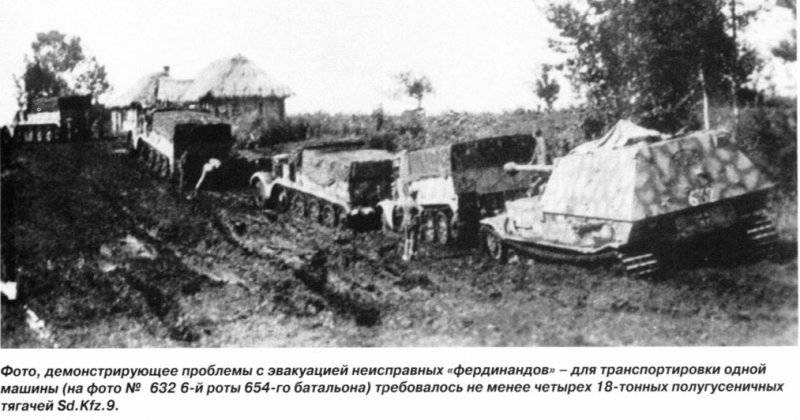
Many modern researchers believe that the lack of lethal weapons of this type of self-propelled artillery was the main reason for the unsuccessful launch of Ferdinands. They said that the vehicle did not have a machine gun and that self-propelled guns were powerless against Soviet infantry. But if you analyze the reasons for the loss of Ferdinand’s self-propelled guns, it becomes clear that the role of infantry in the destruction of Ferdinand’s army was simply insignificant, most of the vehicles were blown up in the yards. mines, and some were destroyed by artillery.
So, contrary to popular belief, V. Model, who allegedly “didn’t know” how to use them correctly, was responsible for the great loss of the Kursk Bulge of Ferdinand’s self-propelled guns , we can say that the main reason for such high losses of these self-propelled guns was the tactically proficient actions of the Soviet commanders, endurance and courage of our soldiers and officers as well as a bit of military luck.
Another reader will object, why don’t we talk about the battles in Galicia, where the slightly modernized “Elephant” has participated since September 1944 (to be distinguished from “Ferdinands” ” earlier with minor improvements, such as the front machine gun and the commander’s cupola)? We answer: because there is nothing better for their fate. Until May 19, they were incorporated into the 12th battalion, fighting local battles. After the start of a major Soviet offensive, the battalion was sent to support the German SS Hohenstaufen division, but was ambushed by Soviet tanks and tank destroyers and 614 vehicles were instantly destroyed. The remnants of the battalion (XNUMX vehicles) were merged into the XNUMX separate heavy company, which participated in battles near Wünsdorf, Zossen and Berlin.
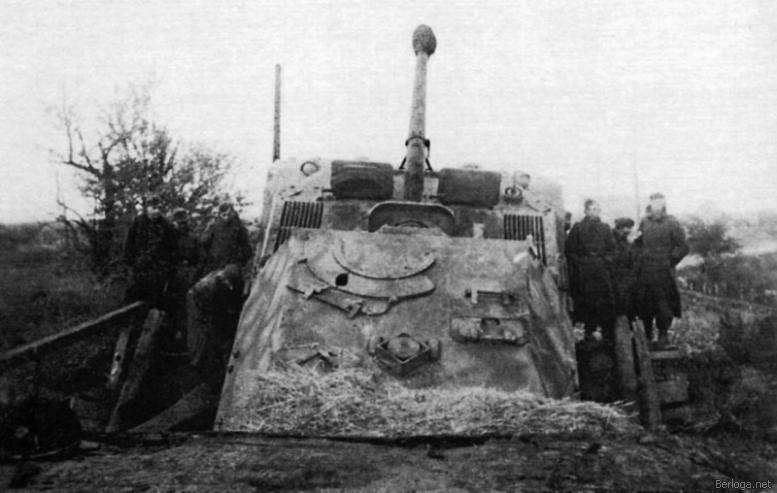
ACS No. Nature of damage Cause of damage Notes731 Caterpillar destroyed Destroyed by mine Self-propelled artillery repaired and sent to Moscow for exhibition of trophy assets522 Caterpillar destroyed, roller damaged Damaged mine exploded, fuel burner burned down523 Caterpillar destroyed, rolling wheels damaged Exploded by mine, set on fire by crew Burned vehicle734 Caterpillar’s lower branch destroyed, blown up by mine exploded, fuel ignited, vehicle burned down.II-02 The right caterpillar was torn off, the crawler roller was destroyed, there was a mine explosion, a bottle of KS was burned.I-02 The left track was damaged torn apart, the wheel rollers were destroyed, mines exploded and caught fire. The car was burned down514 The caterpillar was destroyed, the track roller was damaged Exploded by a mine, it caught fire The machine was burned down502 The sloth was torn apart Blasted by a mine The car was tested by shelling501 Caterpillar was torn apart by a mine. The vehicle was repaired and moved to the landfill NIBT712 The right rudder was destroyed, hit by an artillery shell, the whole crew left the vehicle. Fire extinguished732 Destroyed third car Hit by bullets and burned a bottle of KS Car burned down524 Caterpillar damaged Mined, burned Machine burned II-03 Caterpillar destroyed113 or 713 Both of them Lazy people will be destroyed. The bullet hit the target. The gun is set on fire The car is burned downChapter 601: The right caterpillar is destroyed The fighting compartment is destroyed 701 hit by a 203-mm shell in the commander’s hatch -602 A hole on the left near the fuel tank of the tank’s 76-mm shell or divisional artillery Vehicle burned downII-01 Gun caught fire Ignited by CS bottle Machine burned150061 Sloth and caterpillar destroyed, gun barrel shot through Shell hitting the undercarriage and gun. Crew captured723 Caterpillar destroyed, gun jammed Bullets hit undercarriage and cladding -? Complete destruction Direct hit from Petlykov bomber
